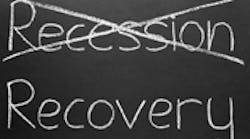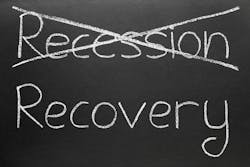Perspective on dental's transition from cosmetic dentistry to the modern dental practice
The most observable trend in dentistry today is the movement of practitioners into specialized areas of dental work, including public aid dentistry, orthodontics (my own specialty), sleep apnea, occlusion, implants, and more. Let me offer some background to these trends.
The problem, of course, is that these are often costly projects. And the public's willingness to spend money on this waned considerably during the recession. Many dental practices that had come to depend on demand for cosmetic projects were hard hit by the recession, while the more traditional dental practices, the ones that were still accepting entire families and doing all phases of dentistry, fared far better.
But in recent years, other approaches have made their way into the field, and some practitioners have turned to patients covered by managed care programs. In exchange for the security of treating this category of patients, practitioners have had to accept the greater expense associated with the phone calls, form-filling, and letter-writing — the general expansion of overhead — that is associated with this population. But once practitioners have engaged this field, with its attendant write-offs and discounting, they can have trouble extricating themselves from it. Practitioners have therefore tried to attract patients on the standard fee-for-service model, which has left many in the field with a blended practice that combines the two populations.
Related | Post-recession analysis by Dental Economics and the Levin Group
Another new tendency is to bring various specialists into a practitioner's office. In the past, most dentists would send patients to the specialist for whatever dental work the patient needed. Now, in an effort to create a kind of one-stop shop, dentists can, for example, call in a surgeon for extractions, especially for wisdom teeth. An endodontist can be brought in to perform root canal procedures, which are quite specialized and difficult. Or a periodondist can be called in to work on a patient's gums. Because of our aging population, we see an expanding need for specialists who can take care of the gums and bones surrounding the teeth.
Public aid dentistry is another approach that some are turning to. These practitioners work in high-volume practices and serve a large and neglected patient population. We are concerned, however, about diminishing resources available in a period of tightened state budgets, and these patients are depending on the support of the states they live in. Dentists following this path have to treat two to three times the numbers they would see in a traditional practice in order to earn the same salary. Burn-out inevitably sets in, and the managers of these practices generally accept a high turn-over rate among their dentists because there's no shortage of applicants waiting to step in. Despite the drawbacks, I think it's an attractive training ground where younger dentists can improve their efficiency and perfect their skills.
Longer term, it is possible that the over-supply of dentists in a metropolitan area like Chicago might encourage dentists to build a practice in remoter areas of the state. Or they might have an office in proximity to Chicago while maintaining a satellite office further away. That chapter is being written as we speak.








